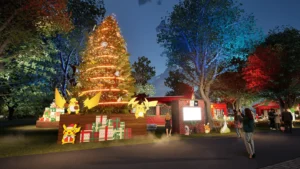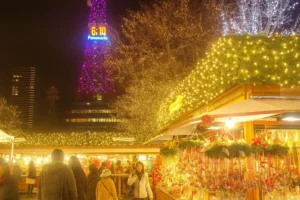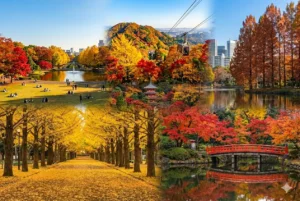Have you ever heard of a forest so quiet it feels like the trees are listening?
Deep in Japan, at the foot of Mount Fuji, lies a forest unlike any other. It’s called Aokigahara, and it’s famous for being dark, mysterious, and even a little scary. But it’s also full of beauty, history, and nature that feels frozen in time. If you’re curious about the strange things people see in this forest, you’re in the right place!
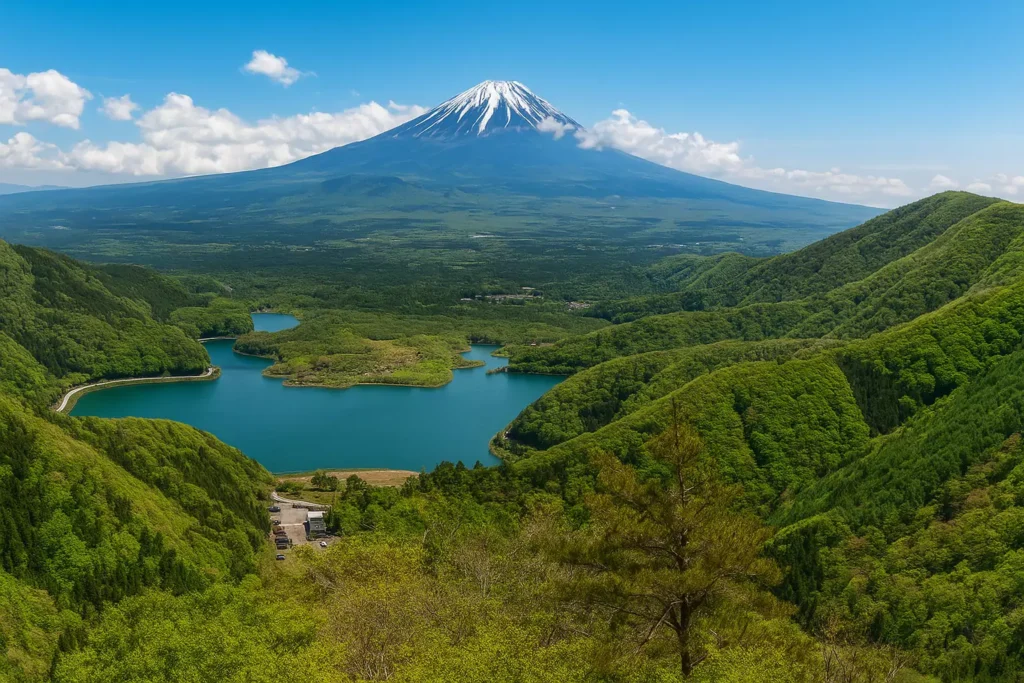
Let’s take a walk through Aokigahara and discover 12 eerie sights you might spot if you ever visit.
Table of Contents
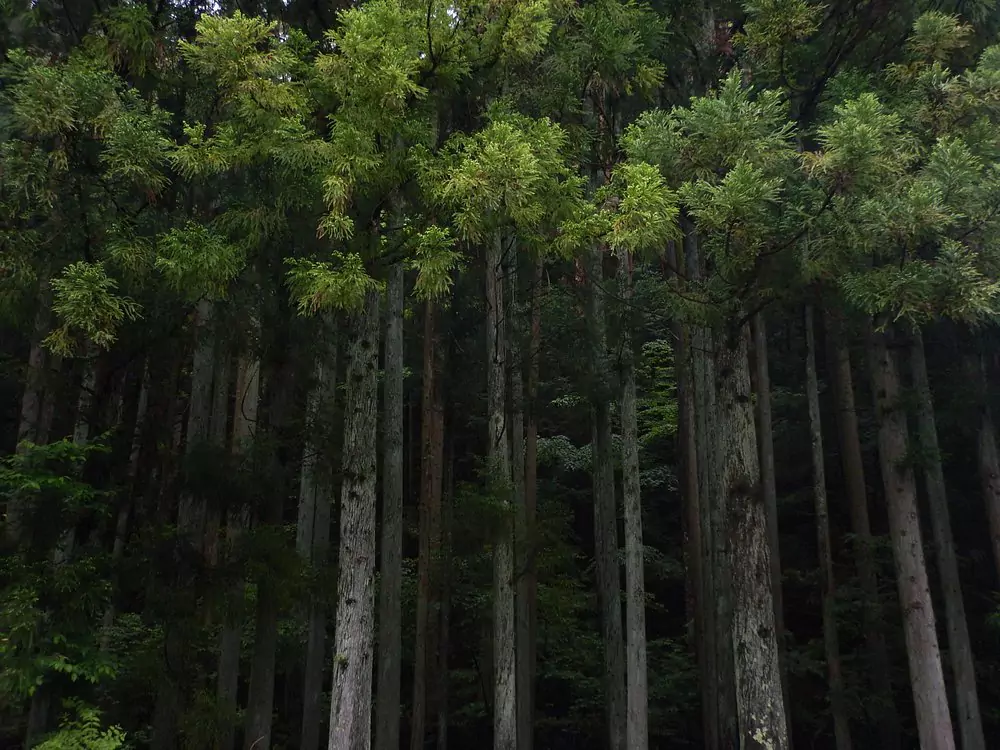
Overview of Aokigahara
Aokigahara, also known as the Sea of Trees, is a dense forest at the base of Mount Fuji in Japan. Covering nearly 30 square kilometers, the forest is so dense with trees that hardly any sunlight filters through to the ground. The forest has lava rock from Mount Fuji’s ancient eruptions and strange twisted tree roots that grow over it.
The forest is quiet—really quiet. Birds are rare, and the thick trees block out most outside noise. Some people say their compass stops working here because of the magnetic lava rocks.
But it’s not all scary. Aokigahara is also home to peaceful nature trails, moss-covered trees, and quiet spots where people go to think or explore.
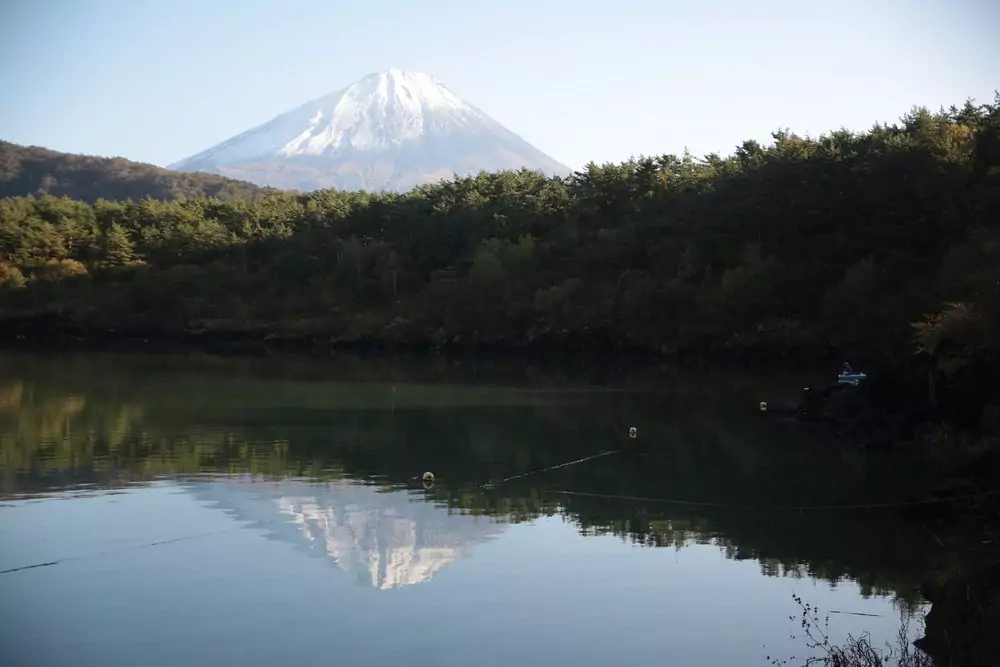
12 Eerie Sights in Aokigahara
1. Twisted Tree Roots
Because the forest grew on hardened lava, trees couldn’t grow deep roots. Their roots twist above the ground in creepy, tangled shapes. It looks like something from a fantasy movie!
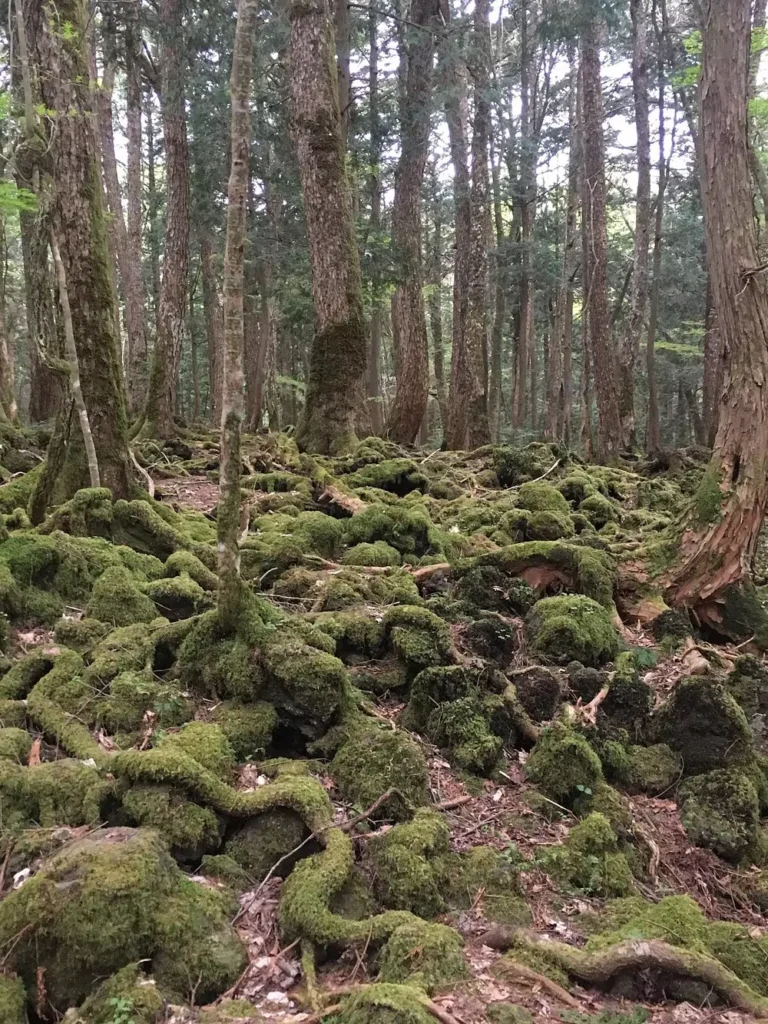
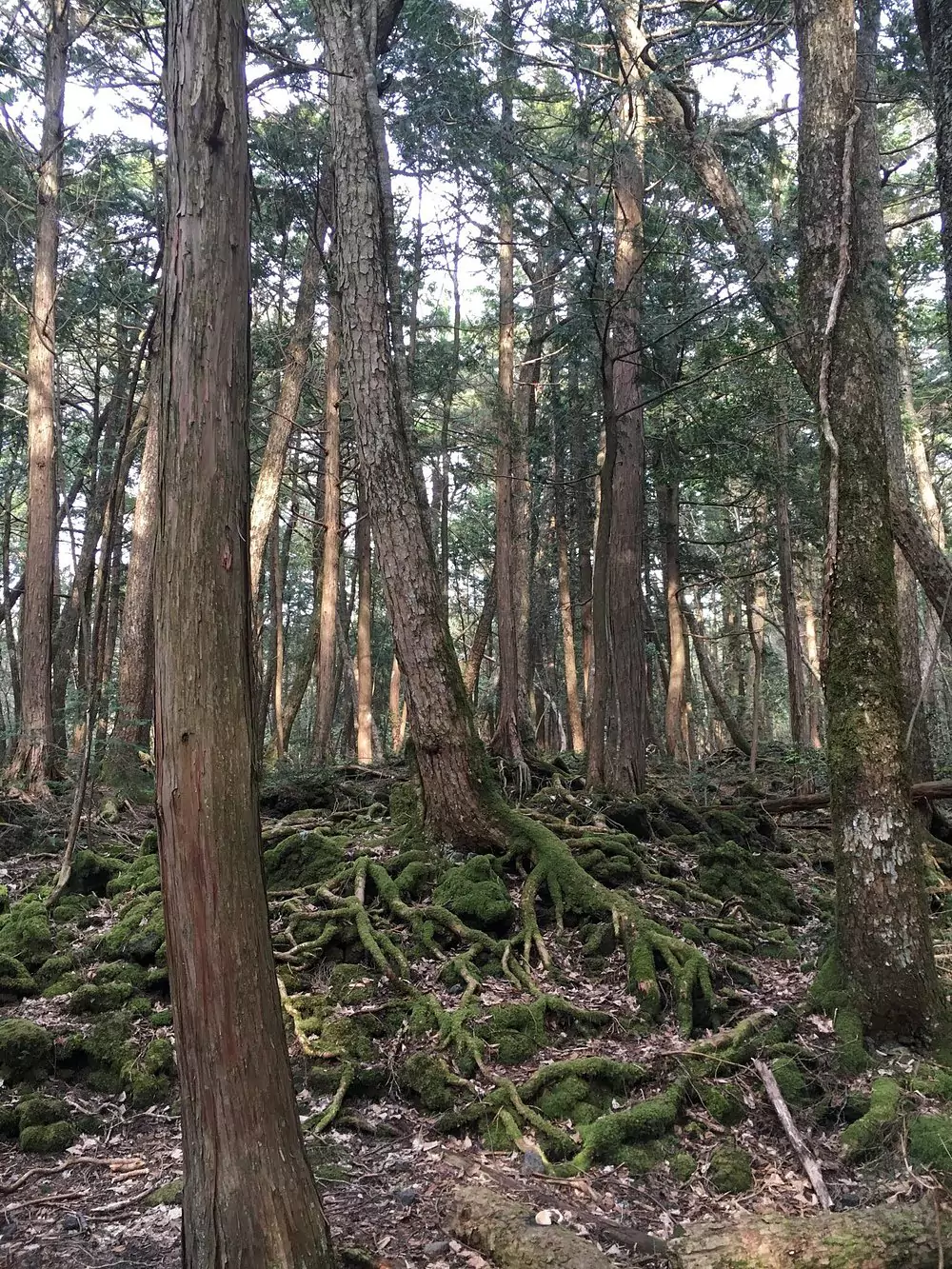
2. Lava Caves
There are a few famous caves in the forest, like the Ice Cave and Wind Cave. These were formed by lava and have icy walls or wind blowing through them year-round. They’re beautiful and chilly.
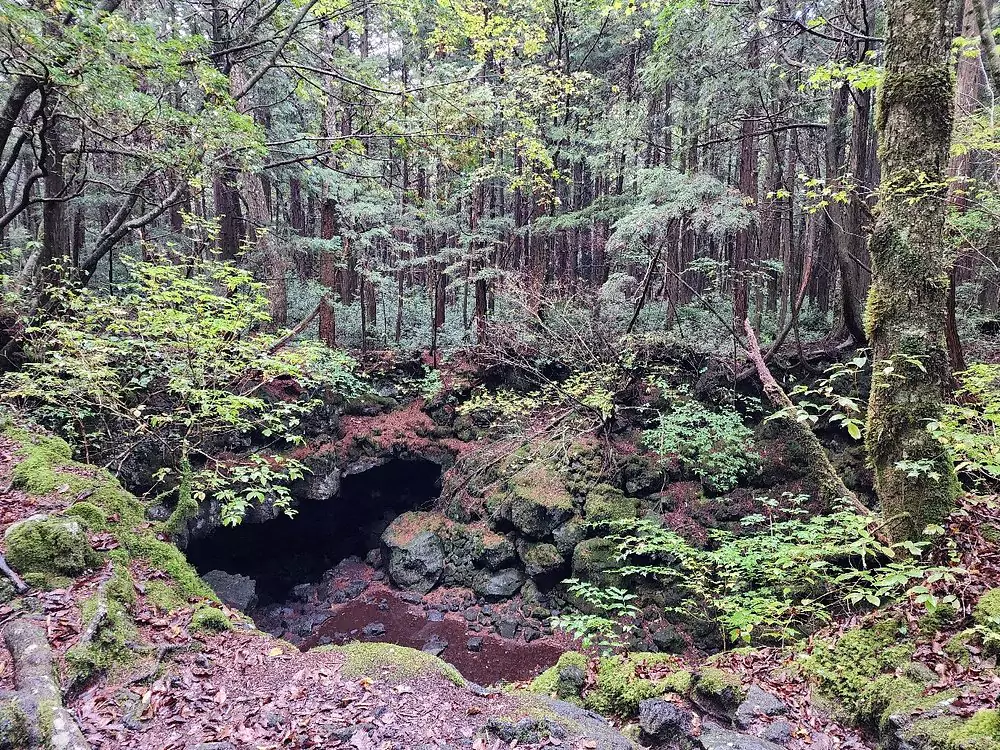

3. Old Ribbons on Trees
Visitors often tie ribbons or strings to trees to mark their paths, so they don’t get lost. Sometimes, you’ll find long trails of old, faded ribbons fluttering in the wind.
4. Abandoned Belongings
Some people leave behind items like shoes, tents, or bags. It adds to the mystery and makes visitors wonder about the stories behind them.
5. Makeshift Shrines
Tiny shrines made of stones or sticks are sometimes found deep in the woods. They may be left as offerings, prayers, or memorials.
6. Dense Fog
Fog often rolls in without warning, wrapping the forest in white. It makes the woods look ghostly and silent.
7. Narrow, Hidden Trails
There are small footpaths that vanish into the trees. Many aren’t on maps. Some seem to go nowhere, and others twist in confusing circles.
8. Broken Signs
Old, broken signs might point in different directions or be too faded to read. It gives the impression that you’ve stepped into a long-abandoned world.
9. Tree Carvings
Some trees have writing or symbols carved into them. Nobody knows who made them or why, and some are very old.
10. Strange Echoes
Because of the thick trees and quiet air, sounds bounce differently here. even the crack of a twig seems unusually loud in the stillness.
11. Hanging Dolls or Charms
Some travelers leave tiny dolls or lucky charms dangling from the tree branches. Some are cute; others look old and spooky.
12. Absolute Silence
The silence alone creates one of the forest’s most unsettling feelings. No cars, no talking, no birds—just stillness. For some, it brings a sense of calm; for others, an eerie unease.


If you’re planning a day trip from Kyoto, the easiest way to get to Otagi Nenbutsu‑ji ,Alternatively, if you prefer to explore at your own pace or visit other nearby To explore more, take a look at this useful guide on getting to Otagi Nenbutsu-ji from Kyoto—it includes walking and bus routes with easy-to-follow tips: click Here .
Why Do People Visit Aokigahara?
Even with its spooky side, many people visit Aokigahara for adventure and nature. There are safe hiking trails like the Narusawa Ice Cave Trail, and the forest is filled with moss, flowers, and beautiful sights.
Some come for quiet meditation. Others are drawn by curiosity or stories they’ve heard. Aokigahara is a special place for locals and tourists alike.

Is It Safe to Explore?
Rich with Wildlife
While Aokigahara is known for its silence, it is also home to a variety of wildlife. You might spot shy foxes, squirrels, and weasels darting through the underbrush. In spring and summer, butterflies and beetles become more visible, adding color to the dense greenery. While birds are rarely heard, owls, woodpeckers, and thrushes can sometimes be seen if you move quietly. This hidden life brings an unexpected softness to the forest’s eerie mood.
Absolutely—as long as you stay on designated paths and heed local guidance. With its dense trees, the forest can be disorienting and easy to get lost in. That’s why visitors are encouraged to go with a guide or stay near popular paths.
You should bring:
- A map or GPS
- Extra food and water
- A flashlight
- A hiking buddy!
Tips for Visiting Aokigahara
- Don’t stray from the trails.
- Bring a guide if it’s your first time.
- Start your hike early to avoid darkness.
- Dress warmly if visiting the caves—it’s cold inside!
- Stay respectful. This forest is meaningful to many people in Japan.

Conclusion
Aokigahara is more than just a spooky forest. It’s a place full of natural beauty, mystery, and peaceful quiet. From its twisted roots and fog-covered paths to strange sights that seem from another world, the forest offers a one-of-a-kind experience.
Whether you’re a nature lover, a brave explorer, or just someone curious about the unknown, Aokigahara has something unforgettable waiting for you.
FAQs
1. Where is Aokigahara located?
Aokigahara is at the base of Mount Fuji in Japan, in Yamanashi Prefecture.
2. Is Aokigahara haunted?
Some people believe so, but many visit without seeing anything strange. It depends on what you believe!
4. Are there wild animals in Aokigahara?
There are some, like foxes and birds, but they’re shy and not dangerous.
5. Are the caves open to visitors?
Yes!The Wind and Ice Caves attract many visitors and are well-marked with clear trails.
6. What should I wear to visit Aokigahara?
Wear hiking boots, warm clothes, and bring a rain jacket just in case.
7. Why do people tie ribbons in the forest?
Ribbons help them find their way back out. It’s easy to lose your path in the dense trees.
8. Is Aokigahara scary?
Some parts can feel spooky, especially in fog or silence, but many people find it peaceful.
9. How long does a visit usually take?
A short walk might take 1–2 hours. Exploring caves or long trails could take 3–4 hours.
10. Is Aokigahara worth visiting?
Absolutely! If you love nature, adventure, or unique places, it’s a must-see in Japan.

